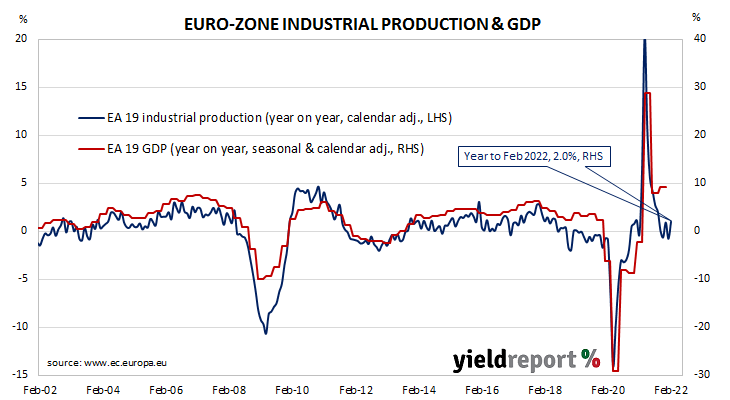Summary: Euro-zone industrial production up 0.7% in February; in line with expectations; annual growth rate speed up to +2.0%; expands in all but one of euro-zone’s four largest economies.
Following a recession in 2009/2010 and the debt-crisis which flowed from it, euro-zone industrial production recovered and then reached a peak four years later in 2016. Growth rates then fluctuated for two years before beginning a steady and persistent slowdown from the start of 2018. That decline was transformed into a plunge in March and April of 2020 which then took over a year to claw back. Production in more-recent months has generally stagnated.
According to the latest figures released by Eurostat, euro-zone industrial production increased by 0.7% in February on a seasonally-adjusted and calendar-adjusted basis. The rise was in line with expectations and in contrast with January’s 0.7% fall after revisions. The calendar-adjusted growth rate on an annual basis sped up from January’s revised rate of -1.5% to +2.0%.
German and French sovereign bond yields fell noticeably on the day. By the close of business, the German 10-year bund yield had shed 6bps to 0.86% while the French 10-year OAT yield finished 7bps lower at 1.33%.
Industrial production expanded in all but one of the euro-zone’s four largest economies. Germany’s production expanded by 0.4% while the growth figures for France, Spain and Italy were -0.9%, 0.9% and 4.0% respectively.


